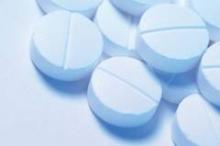User login
The use of acetaminophen has been linked to cases of Stevens-Johnson syndrome and other serious, potentially fatal skin reactions, and should be considered as a possible cause in patients who develop these reactions after taking any product containing acetaminophen, the Food and Drug Administration announced on August 1.
Use of acetaminophen also has been associated with toxic epidermal necrolysis (TEN) and acute generalized exanthematous pustulosis (AGEP). All three types of skin reactions have been reported with the first dose and at other times during treatment. Although it is difficult to determine the frequency of these reactions, "it is likely" that these events are rare, the FDA statement said.
Health care professionals "should be aware of this rare risk and consider acetaminophen, along with other drugs already known to have such an association, when assessing patients with potentially drug-induced skin reactions," and should advise patients that acetaminophen should be stopped immediately with the first sign of a skin rash or hypersensitivity, the FDA said in the announcement.
The warning is based on the FDA�s review of 107 serious skin reactions associated with acetaminophen products reported to the Adverse Event Reporting System (AERS) and reports in the medical literature between 1995 and 2011.
A small number of cases in the literature describe positive rechallenges with acetaminophen, "supporting causality," according to the statement.
They include the case of a 7-year-old girl who developed TEN and was hospitalized after taking three doses of acetaminophen at a 10 mg/kg dose. Six months later, she developed diffuse erythema and urticaria 30 minutes after a rechallenge with a 250 mg dose and was hospitalized again.
Another case was an 83-year-old man, diagnosed with AGEP after being hospitalized for a reaction that occurred after taking acetaminophen, along with other medications after hip replacement. The rash recurred when he received intravenous propacetamol, a prodrug of acetaminophen.
From 1969 to 2012, 91 cases of SJS/TEN and 16 cases of AGEP were reported to AERS in people who took acetaminophen (most were single-ingredient products), and included 67 hospitalizations and 12 deaths. In most of these cases, the doses reported (when the information was available) were within recommendations.
Of the 91 SJS/TEN cases, 6 were determined to be probable cases associated with acetaminophen and the rest were considered possible. One of the 16 AGEP cases was considered a probable case and the rest were considered possible.
Warnings about these risks- which are already in the labels of NSAIDs- will be added to the labels of prescription drugs that contain acetaminophen. The agency will request that manufacturers of OTC acetaminophen-containing products, such as Tylenol, add a warning to those products as well.
Serious adverse events associated with acetaminophen should be reported to the FDA's MedWatch program or by calling 800-332-1088.
The use of acetaminophen has been linked to cases of Stevens-Johnson syndrome and other serious, potentially fatal skin reactions, and should be considered as a possible cause in patients who develop these reactions after taking any product containing acetaminophen, the Food and Drug Administration announced on August 1.
Use of acetaminophen also has been associated with toxic epidermal necrolysis (TEN) and acute generalized exanthematous pustulosis (AGEP). All three types of skin reactions have been reported with the first dose and at other times during treatment. Although it is difficult to determine the frequency of these reactions, "it is likely" that these events are rare, the FDA statement said.
Health care professionals "should be aware of this rare risk and consider acetaminophen, along with other drugs already known to have such an association, when assessing patients with potentially drug-induced skin reactions," and should advise patients that acetaminophen should be stopped immediately with the first sign of a skin rash or hypersensitivity, the FDA said in the announcement.
The warning is based on the FDA�s review of 107 serious skin reactions associated with acetaminophen products reported to the Adverse Event Reporting System (AERS) and reports in the medical literature between 1995 and 2011.
A small number of cases in the literature describe positive rechallenges with acetaminophen, "supporting causality," according to the statement.
They include the case of a 7-year-old girl who developed TEN and was hospitalized after taking three doses of acetaminophen at a 10 mg/kg dose. Six months later, she developed diffuse erythema and urticaria 30 minutes after a rechallenge with a 250 mg dose and was hospitalized again.
Another case was an 83-year-old man, diagnosed with AGEP after being hospitalized for a reaction that occurred after taking acetaminophen, along with other medications after hip replacement. The rash recurred when he received intravenous propacetamol, a prodrug of acetaminophen.
From 1969 to 2012, 91 cases of SJS/TEN and 16 cases of AGEP were reported to AERS in people who took acetaminophen (most were single-ingredient products), and included 67 hospitalizations and 12 deaths. In most of these cases, the doses reported (when the information was available) were within recommendations.
Of the 91 SJS/TEN cases, 6 were determined to be probable cases associated with acetaminophen and the rest were considered possible. One of the 16 AGEP cases was considered a probable case and the rest were considered possible.
Warnings about these risks- which are already in the labels of NSAIDs- will be added to the labels of prescription drugs that contain acetaminophen. The agency will request that manufacturers of OTC acetaminophen-containing products, such as Tylenol, add a warning to those products as well.
Serious adverse events associated with acetaminophen should be reported to the FDA's MedWatch program or by calling 800-332-1088.
The use of acetaminophen has been linked to cases of Stevens-Johnson syndrome and other serious, potentially fatal skin reactions, and should be considered as a possible cause in patients who develop these reactions after taking any product containing acetaminophen, the Food and Drug Administration announced on August 1.
Use of acetaminophen also has been associated with toxic epidermal necrolysis (TEN) and acute generalized exanthematous pustulosis (AGEP). All three types of skin reactions have been reported with the first dose and at other times during treatment. Although it is difficult to determine the frequency of these reactions, "it is likely" that these events are rare, the FDA statement said.
Health care professionals "should be aware of this rare risk and consider acetaminophen, along with other drugs already known to have such an association, when assessing patients with potentially drug-induced skin reactions," and should advise patients that acetaminophen should be stopped immediately with the first sign of a skin rash or hypersensitivity, the FDA said in the announcement.
The warning is based on the FDA�s review of 107 serious skin reactions associated with acetaminophen products reported to the Adverse Event Reporting System (AERS) and reports in the medical literature between 1995 and 2011.
A small number of cases in the literature describe positive rechallenges with acetaminophen, "supporting causality," according to the statement.
They include the case of a 7-year-old girl who developed TEN and was hospitalized after taking three doses of acetaminophen at a 10 mg/kg dose. Six months later, she developed diffuse erythema and urticaria 30 minutes after a rechallenge with a 250 mg dose and was hospitalized again.
Another case was an 83-year-old man, diagnosed with AGEP after being hospitalized for a reaction that occurred after taking acetaminophen, along with other medications after hip replacement. The rash recurred when he received intravenous propacetamol, a prodrug of acetaminophen.
From 1969 to 2012, 91 cases of SJS/TEN and 16 cases of AGEP were reported to AERS in people who took acetaminophen (most were single-ingredient products), and included 67 hospitalizations and 12 deaths. In most of these cases, the doses reported (when the information was available) were within recommendations.
Of the 91 SJS/TEN cases, 6 were determined to be probable cases associated with acetaminophen and the rest were considered possible. One of the 16 AGEP cases was considered a probable case and the rest were considered possible.
Warnings about these risks- which are already in the labels of NSAIDs- will be added to the labels of prescription drugs that contain acetaminophen. The agency will request that manufacturers of OTC acetaminophen-containing products, such as Tylenol, add a warning to those products as well.
Serious adverse events associated with acetaminophen should be reported to the FDA's MedWatch program or by calling 800-332-1088.

